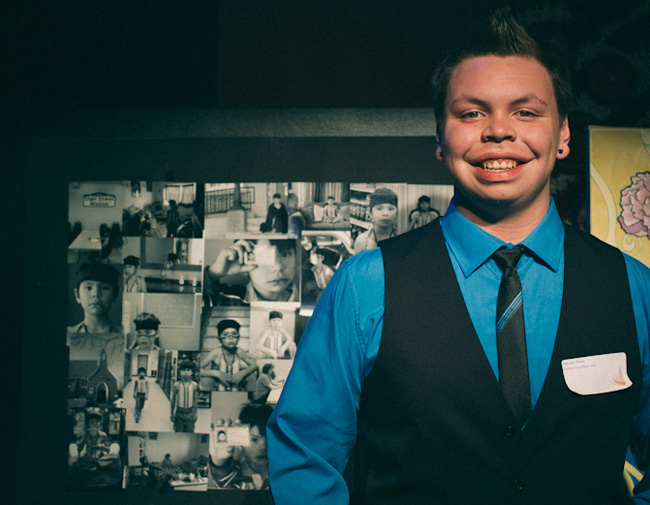Idle No More inspired ‘Nish boys

MONTREAL – Two Anishinabek Nation boys are winners in the 2013 Canadian Aboriginal Writing and Arts Challenge conducted by the Historica-Dominion Institute.
Robert McCue, 16, Chippewas of Georgina Island, took first place in the Junior Writing category with his essay about the 1600 Km. trek by the Nishyuu Walkers from Great Whale Lake to Parliament Hill.
“I thought that, instead of telling the story from any of the Cree walkers’ perspective, since they have voices of their own to tell it, I would tell it from the two spirits who brought David Kawapit the idea – Mukwa and Maheengun (Bear and Wolf),” says Robert, who lives just outside Toronto.
“As I was writing the story I was reminded of how quickly the news faded from my mind and how fast Idle No More has dwindled down in the mainstream media, and so I voice my concern through the characters. I really hope that Nishiyuu — the Journey of the People — has not been in vain; that it will inspire our people to fix problems that have been ignored for too long.”
Brandan Wilson, 15, M’Chigeeng First Nation, took first place in the Junior Art competition with a collage of photos featuring his seven-year-old brother Phoenix.
“As a First Nations person living off reserve, I encounter many stereotypes of Natives,” says Brandan, who lives in Copper Cliff in Greater Sudbury. “I wanted to explore this idea of what people think of Native people now, especially after the Idle No More movement.
“We went around our city of Sudbury and I took photos of him in non-traditional places – no rivers, no lakes, no Mother Nature. Just him in and around the city, in places like the grocery store, back of a police car, soup kitchen, church rectory and school. These places had a direct impact on our Native culture.
“There are two larger photos of Phoenix holding his status card. No other culture in Canada is identified by the Canadian government by ID cards.”
The Canadian Aboriginal Writing Challenge began in 2005 as a national writing competition for Aboriginal youth. In the 2010-2011 challenge year, the Institute introduced an expanded challenge that would include a visual arts component. Participants in the newly-expanded Canadian Aboriginal Writing and Arts Challenge are invited to submit a piece of creative writing (past entries have included short stories, plays, screenplays and collections of poetry), or a piece of two-dimensional artwork that captures a defining moment in Aboriginal history. Winning entries are selected by a jury of Aboriginal authors, artists and leaders including Joseph Boyden, Tomson Highway, Drew Hayden Taylor, Lee Maracle, John Kim Bell, Kent Monkman and Teresa Marshall.
For more information, visit http://www.our-story.ca/

